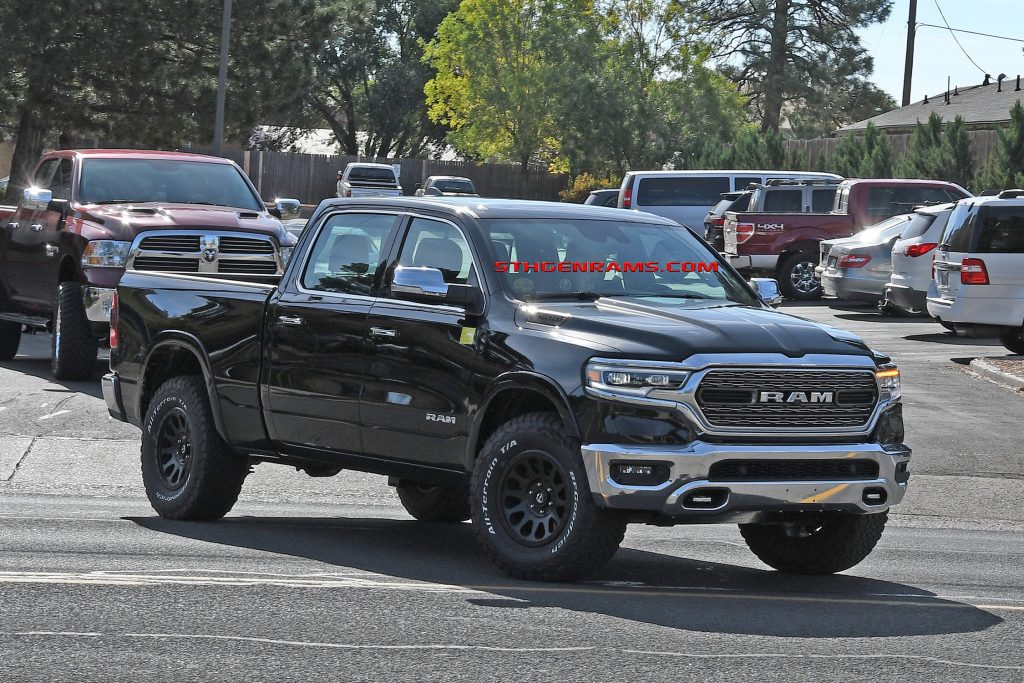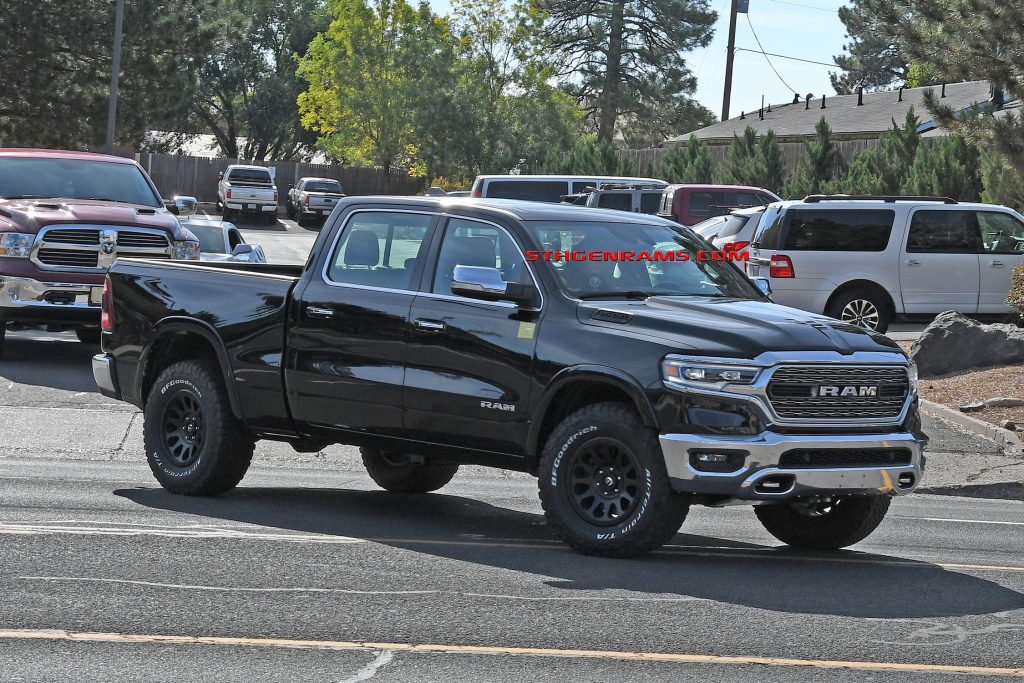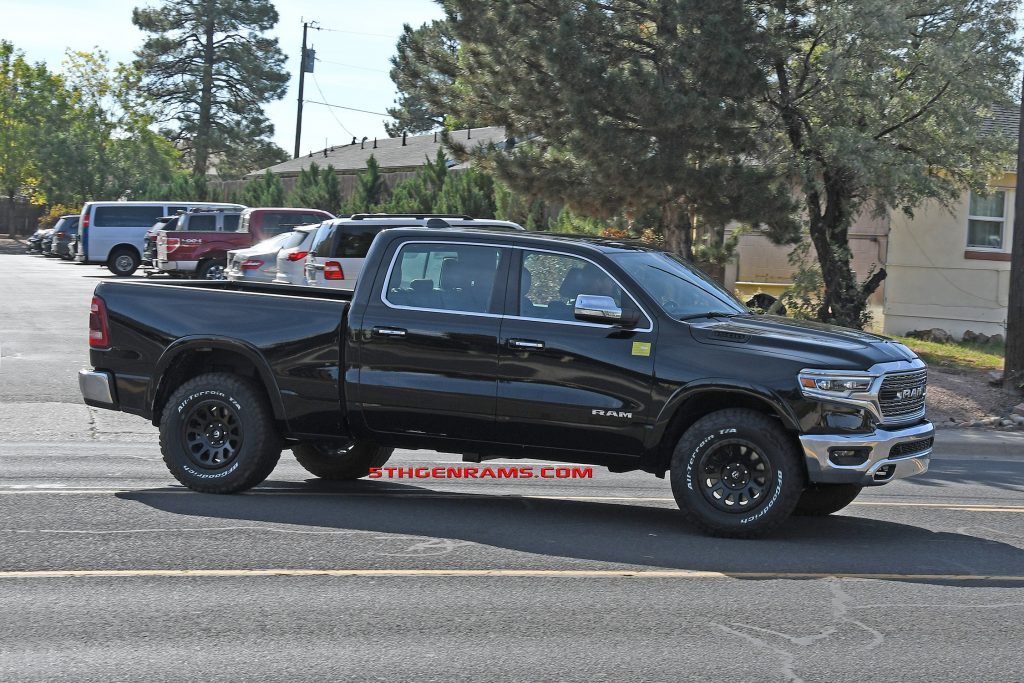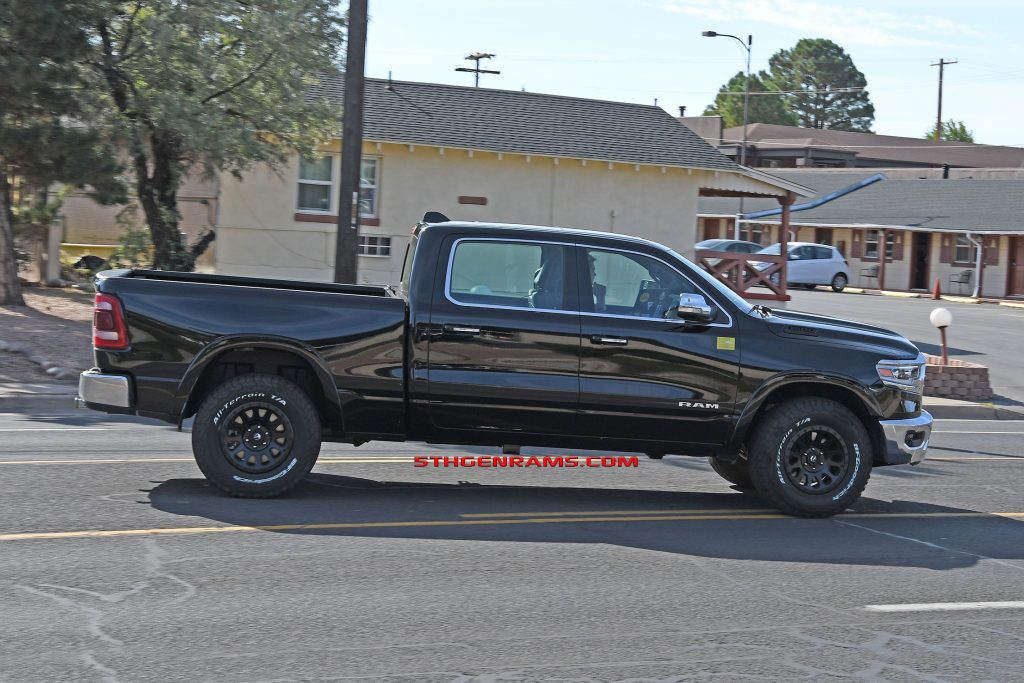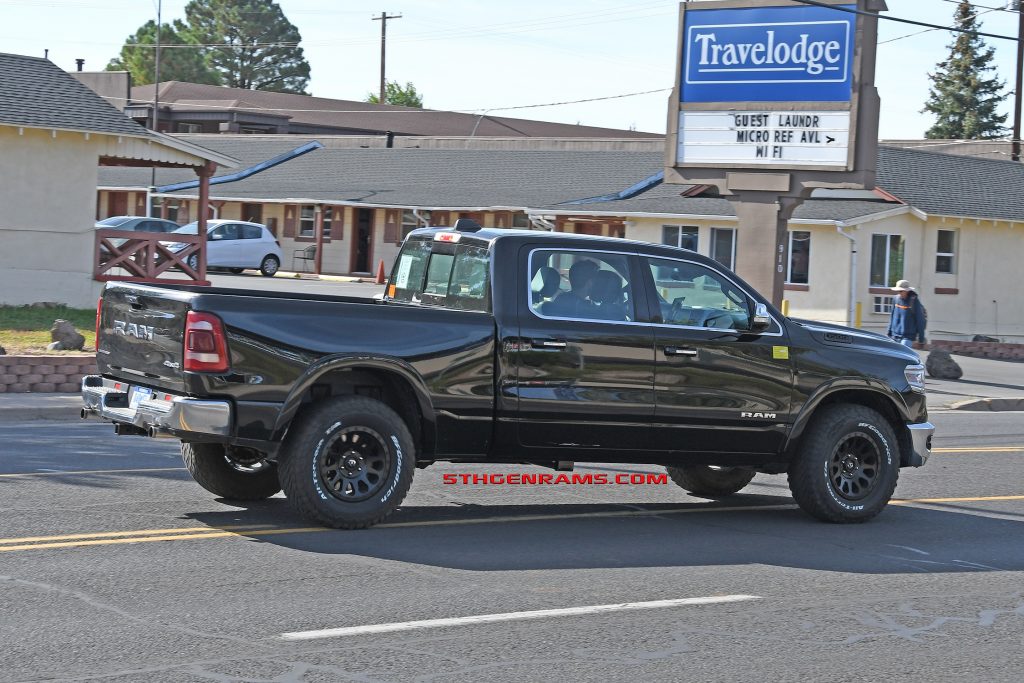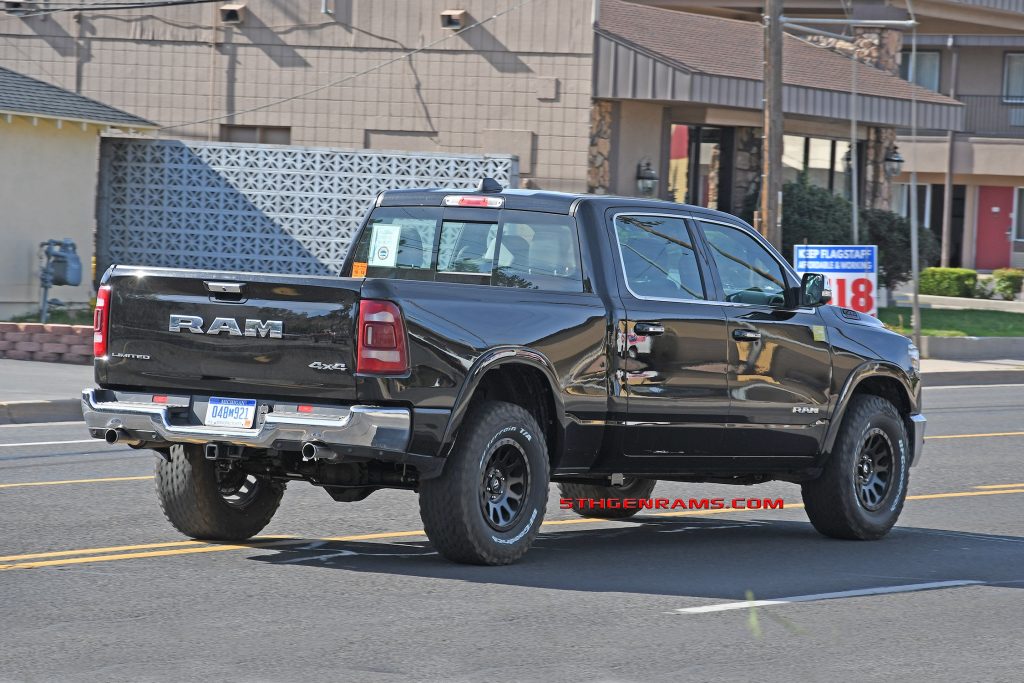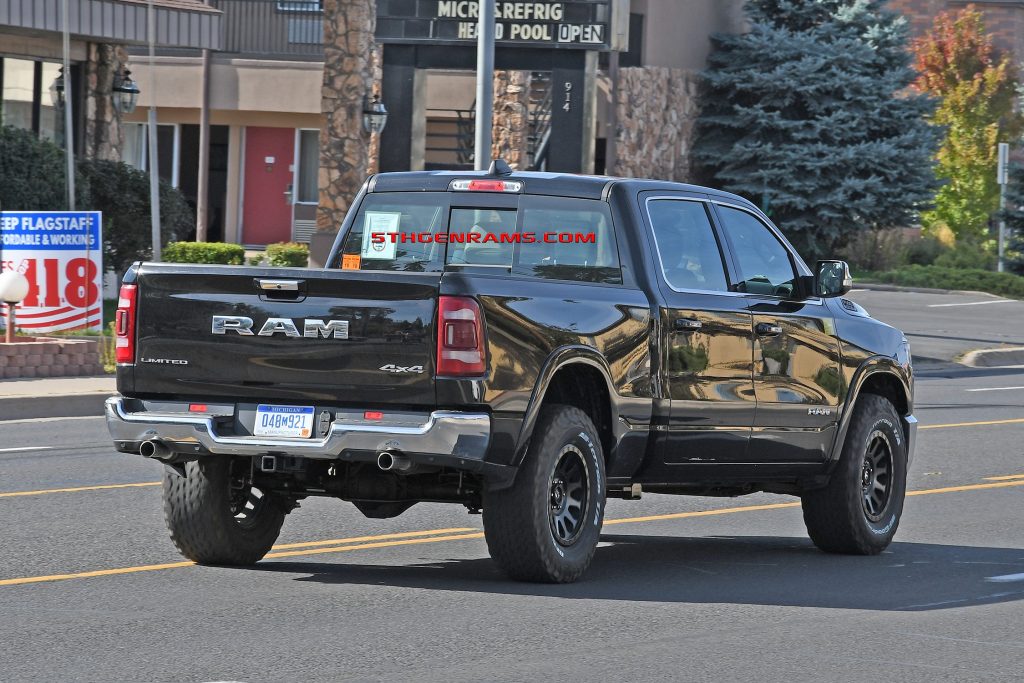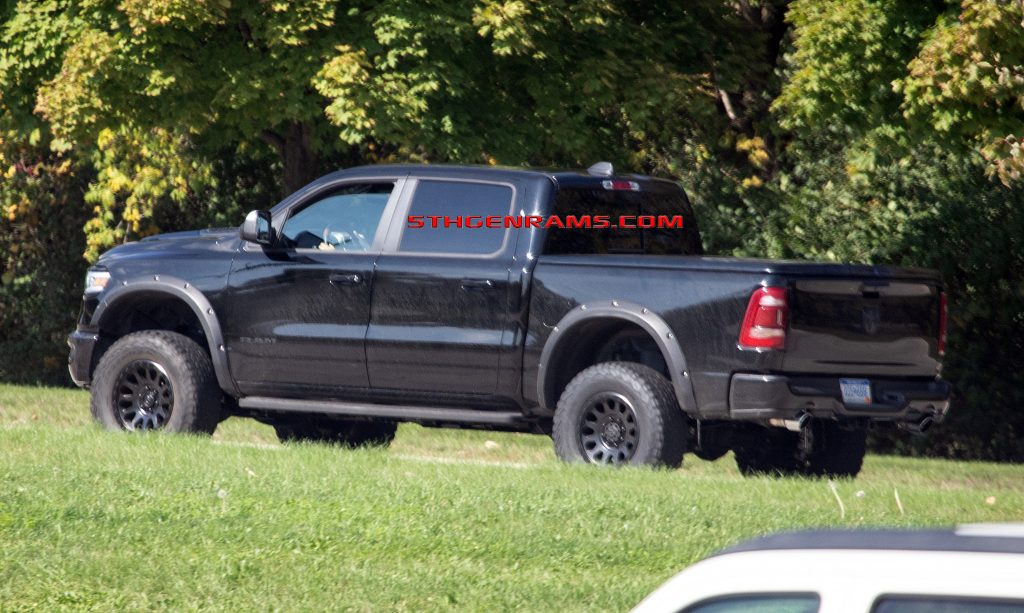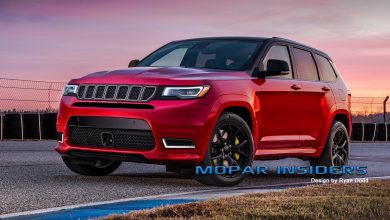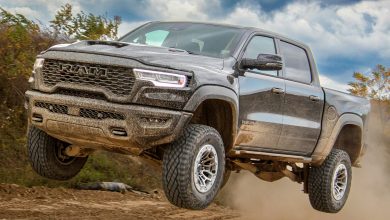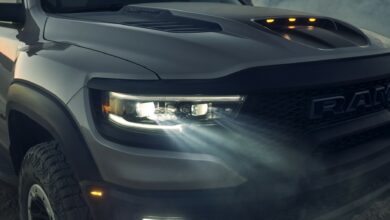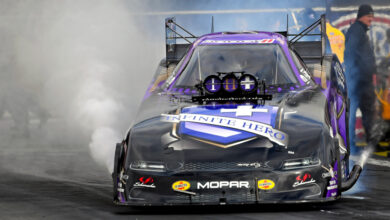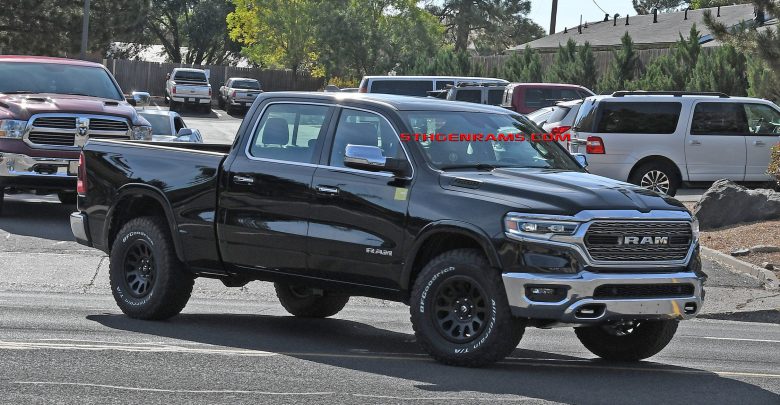
One of the most highly anticipated vehicles in the entire auto industry, has to be the upcoming 2021 Ram 1500 Rebel TRX. Since the original Ram 1500 Rebel TRX Concept made its debut at the State Fair of Texas back in September 2016, the truck has set the automotive world on fire. The concept was based of the last generation of Ram 1500 (DS) and while the response was huge from the public Ram, it was too close to the launch of the all-new 2019 Ram 1500 (DT) to produce. On June 1st of this year, Ram made the official announcement that they would indeed produce such a truck and it would be released before 2022.
Fast forward just over two years from the original Ram Rebel TRX Concept, we are seeing a lot more details about the future Ram performance vehicle as well as new photos of prototypes of the new truck.
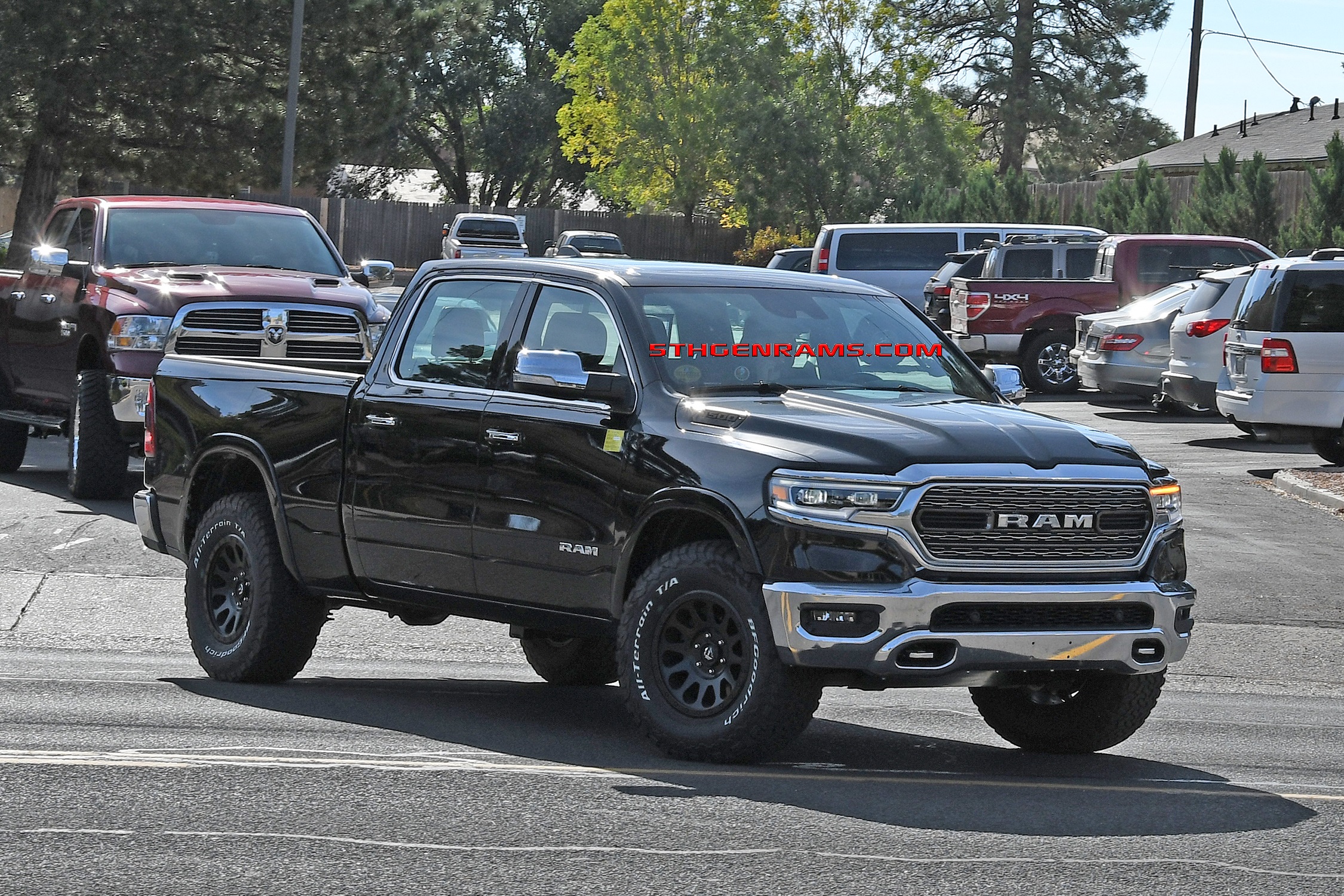
First off, there will be two versions of the upcoming SRT engineered performance Rebel. As originally stated on our sister site 5thGenRams.com, the first model will be called Rebel TR. The Rebel TR will be powered by an all-new 7.0-liter 426 cubic-inch SRT HEMI V8. Codenamed “Banshee”, this engine will replace the current 6.4-liter SRT HEMI V8 “Apache” engine. The Banshee will be naturally aspirated and from what we hear will have a power rating just north of 525 horsepower.
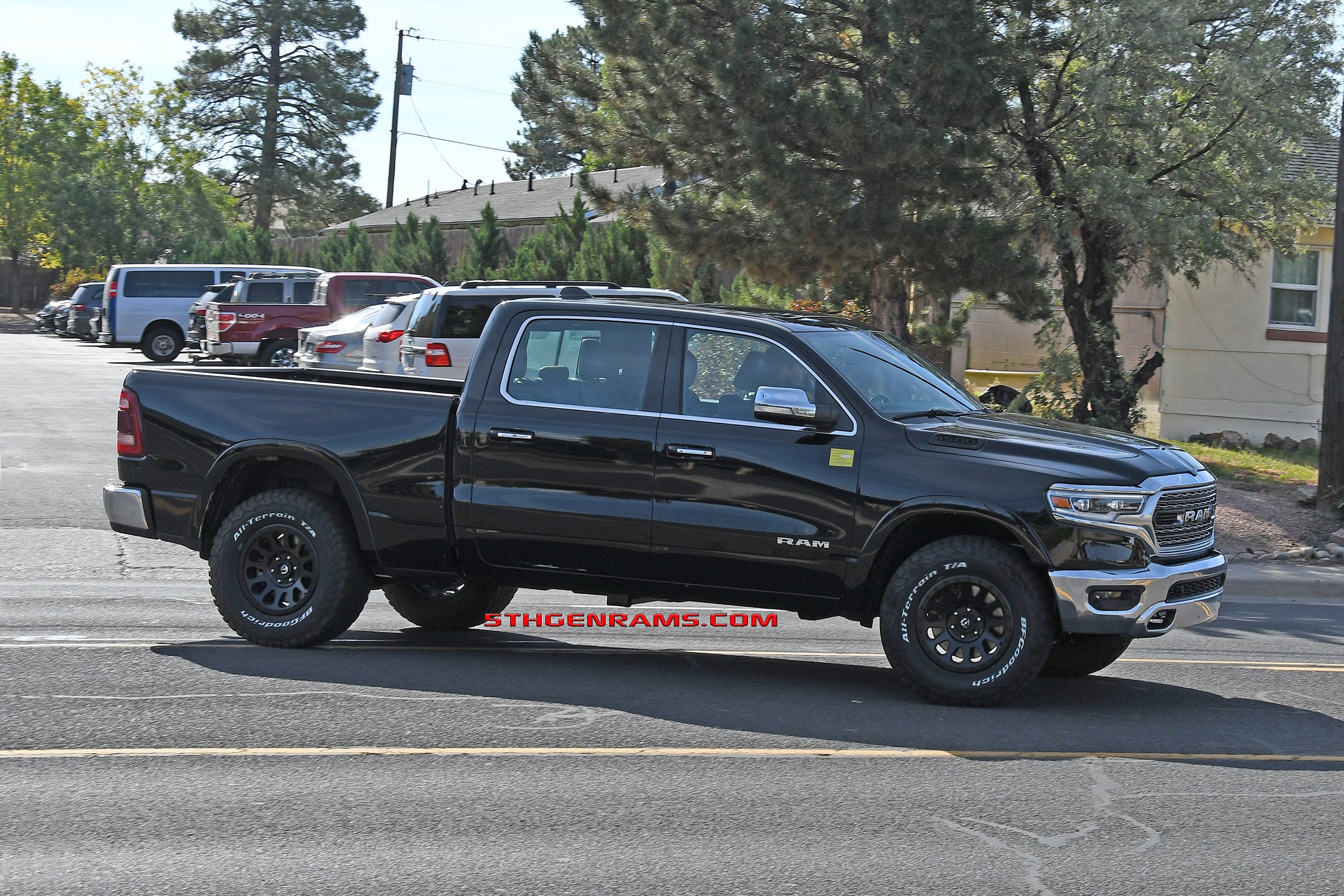
Second, is the Rebel TRX. The Rebel TRX (like the original concept), will feature the 6.2-liter Supercharged HEMI HELLCAT V8. However, unlike the concept that was rated at a detuned 575 horsepower the HELLCAT engine will get it’s full 707 horsepower rating according to our sources.
Back in March, spy photographers caught a black 2019 Ram 1500 Big Horn near the FCA US Auburn Hills, Michigan campus with aggressive tires and a lift kit.
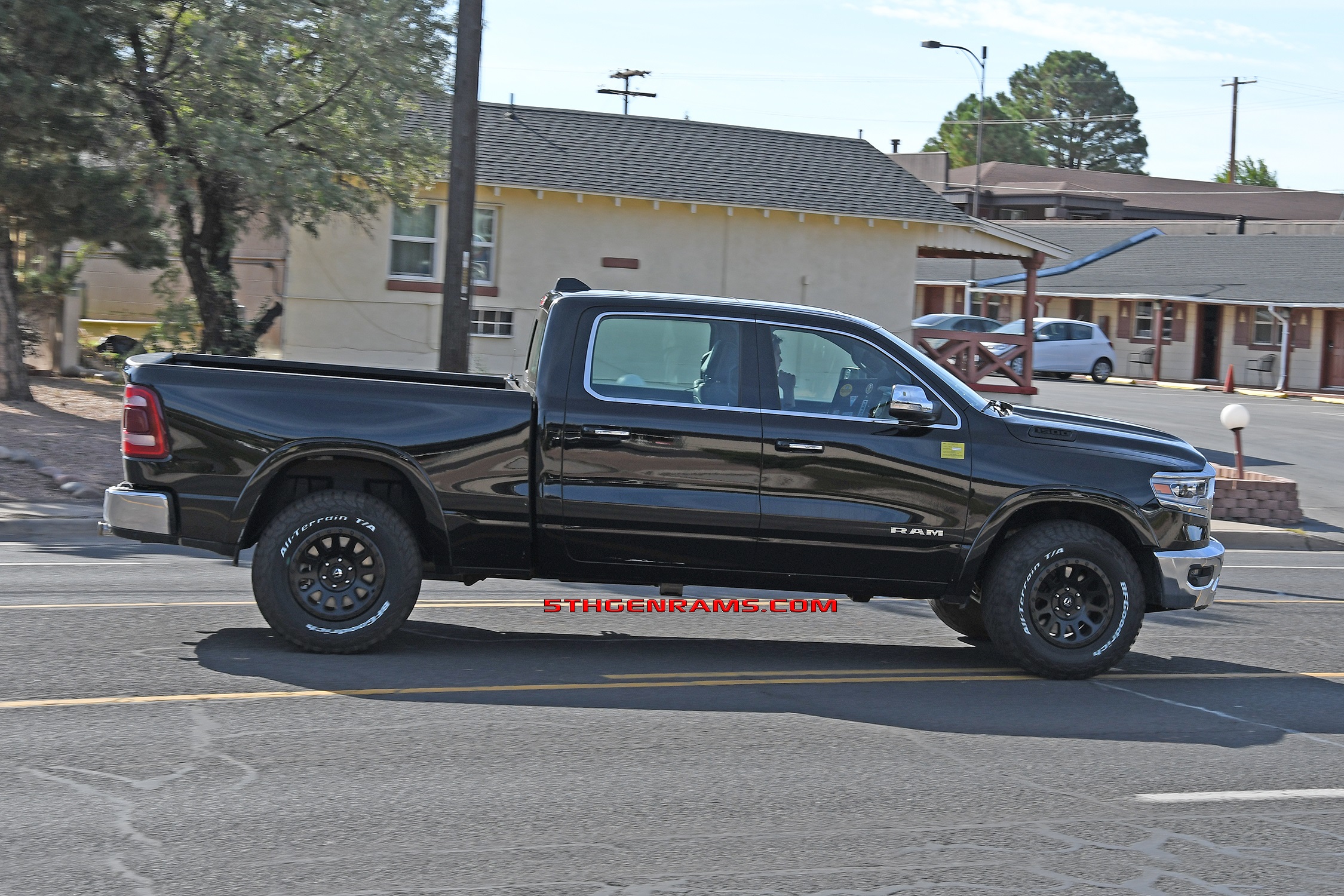
5thGenRams.com, also showed us some spy photos in back in August of what looked to be just a typical 2019 Ram 1500 Big Horn Crew Cab 4×4. Except for this truck looked to have a 2-inch lift kit, multi-spoke wheels, BFGoodrich All-Terrain T/A KO2 tires, and manufacturers plates. Spy photographers caught the truck testing in Arizona and said that the truck had a supercharger whine to it.
Now we are seeing more mules show up not just in Arizona, but Michigan as well.
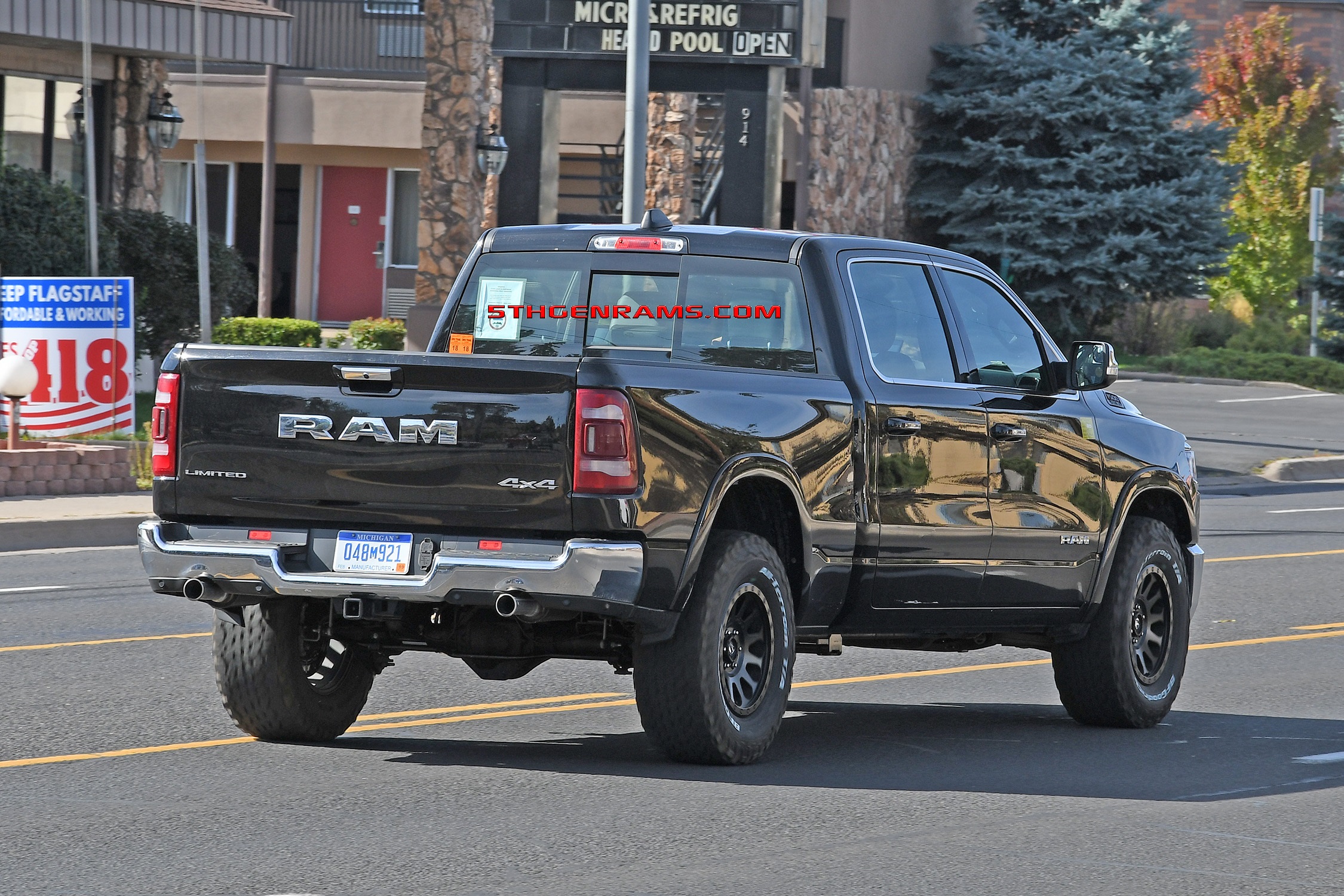
We obtained these latest spy photos from Spiedbilde Photography, caught this Ram 1500 Crew Cab Limited export-model doing testing near Flagstaff, Arizona the other day. This particular truck has about a 2-inch lift like the other trucks caught before it. It carries the same wheels and tires as the Big Horn tester in August. This particular model was said to not have the supercharger whine like the Big Horn caught before it.
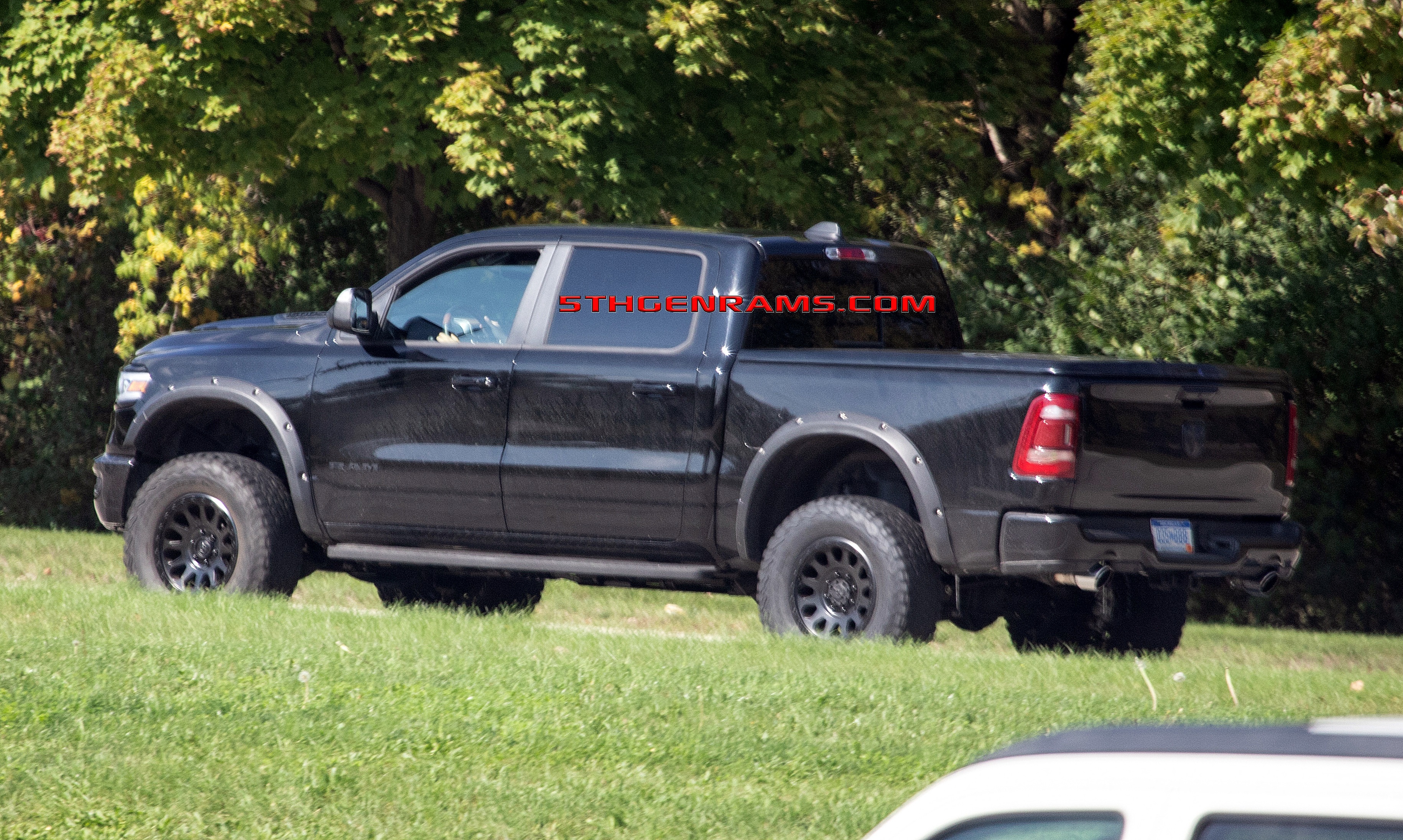
One of our keen forum members, also sent us this picture of another Limited model near the Auburn Hills campus. This model was equipped with the same wheels and tires as the Big Horn and Limited models caught in Arizona, however a lot of features stand out about this one. The truck has a Ram 1500 Rebel hood, Mopar fender flares and again equipped with a lift as well. However this picture shows that this particular truck features 6-lug wheels up front (like the other trucks), but shows 8-lug wheels in the rear.
We know Ram has plans to not just beat the Ford F-150 SVT Raptor, but to annihilate it.
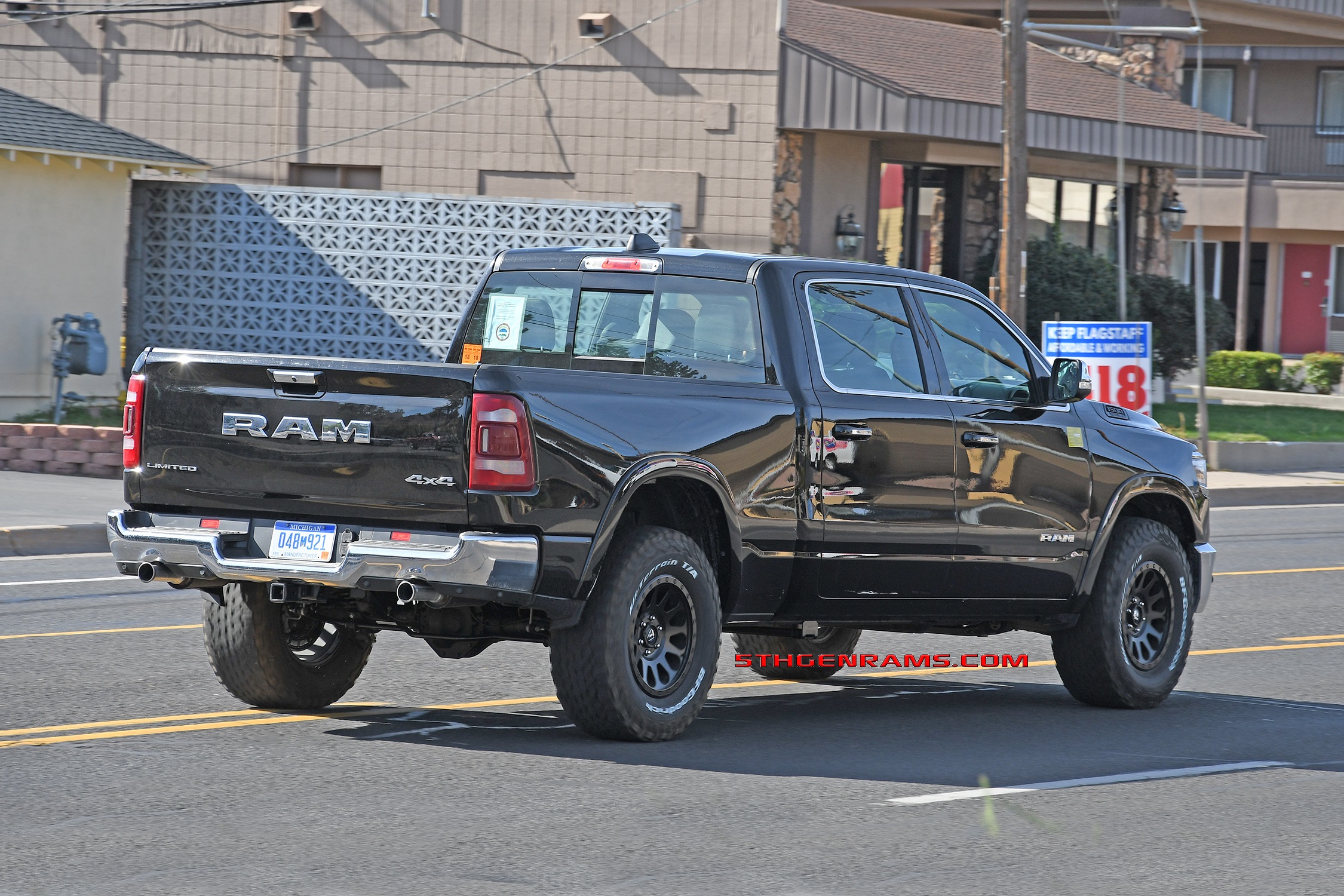
Here are some of the details our insiders have provided us…
- The TR and TRX will have 8-speed automatic transmissions standard
- +4-inches more suspension travel over the 2019 Ram 1500 Rebel
- +6-inches wider track
- 2.5-inch lift over standard 2019 Ram 1500 Rebel
- 35-inch off-road tires (we assume they are the BFGoodrich All-Terrain T/A KO2s, which are also used on Wrangler Rubicon models)
- Upgraded frame
- Active shock absorbers (which we believe are sourced from King Off-Road Racing Shocks)
The 2021 Ram 1500 Rebel TRX will start production in the third-quarter of 2020 at the Sterling Heights Assembly Plant in Sterling Heights, Michigan.
2021 Ram 1500 Rebel TR and TRX Prototype Gallery:
Stay tuned to 5thGenRams.com and MoparInsiders.com for all the latest Ram and Rebel TRX information.

